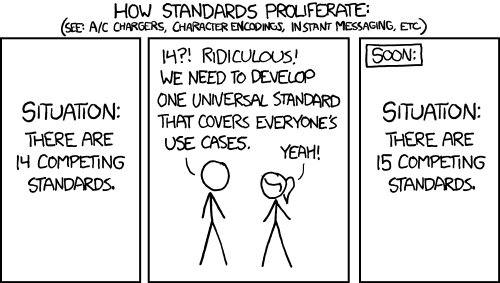Hello BIMfans,
Now that I have established what my Data Requirements and Information Formats are, I now need to consider what Standards I want followed to make sure that the information I receive is right, complete, and structured correctly.
It is worth saying at the start of this post that (as a member of British, European and International Standards committees) I am a strong believer in adopting a standardized approach. However, often when we are working we deal with Standards, instead of a Standard.

At BRE, I often audit for our BIM Business System Certification scheme. When auditing, I find it amazing how often I see phrases such as “BS 1192 amended/revised/inspired” when referring to naming conventions. What also makes matters worse is when standards are developed often they are not considered holistically and as a result conflict with each other.

As this blog is looking at promoting good practice, I will aim to follow existing standards where possible as opposed to producing my own. On the Official BIM Level 2 Webiste, there are six ‘core’ standards identified which I will be following which are:
- BS 1192; guidance on how to produce information using a standard file naming, revision, and suitability code convention, as well as exchanging information within a common data environment. Note: As I am a team of one I will not be following the common data environment exchange requirements.
- PAS 1192-2; guidance on what content should be within key documents such as the Employer’s Information Requirements (EIR) briefing document, and the BIM Execution Plan (BEP), as well as the relevant information management responsibilities. Note: As I am a team of one I will be undertaking all information management roles, and will also author all of the documentation.
- PAS 1192-3; guidance on the relationship between the Employer’s Information Requirements (EIR) and other core documents from the organization and asset teams, as well as a definition for content included within an asset information model, and guidance on managing the asset information model throughout the asset’s life cycle.
- BS 1192-4; guidance on how to structure an information exchange to COBie, including how data should be presented, what the expected attributes are, and where to locate recommended type and system attributes. Note: I will producing COBie compliant content.
- PAS 1192-5; guidance on how to define the sensitivity of an asset as well as how to safeguard its information. Note: While my asset is not defined as ‘sensitive’, I will be requiring safeguards to prevent the release of any personally identifiable information on regarding the location of my home.
- BS 8536-1 / BS 8536-2; guidance on forming Plain Language Questions, additional owner and operator information requirements, key employer activities at each project stage, and guidance on post-occupancy evaluation.
Those of you who have been paying attention will have noticed that most (if not all) of these standards have already been referred to in previous posts. These six documents make up the ‘core’ set of BIM Level 2 standards, but they are not enough to manage a project, so I intend to refer to some additional Standards which will be outlined in future posts.
These Standards (as well as many, many others) will be used to structure my information as well as the key documentation that define relevant standards, methods, and procedures that well used to undertake the production of my information model.
And there you have it. I have defined the standards that I intend to have followed. This means that I have now answered another Plain Language Question; PLQ1.4 Complete!
Brief:
1.1 Have the model purposes been defined?
1.2 Are there any specific data requirements to achieve these purposes?
1.3 What format shall the information be delivered in?
1.4 What standards will be followed?
1.5 What level of accuracy/detail/development is required?
1.6 Is there sufficient information to produce an EIR?
Now that I know what standards to follow. I need to now establish what Level of Definition is required for my information to satisfy PLQ1.5…
Note: If you have any comments regarding my choice of Standards, then please let me know either on Twitter, or by commenting below.
Surely CDE is not a problem to implement, even as a one man band?
LikeLike
Implementation is not a problem, I certainly could do it; the issue it why would I.
Work in Progress doesn’t work as I’ll have access to all developing content. I will be the person producing, checking, approving, and authorising my own deliverables so the approval gate system can’t work as intended either.
I could artificially create a few WIP areas for each discipline and force the process but to be honest it is a lot of effort for no real advantage.
(Also as I minor issue, I have no licence for a CDE tool, and free extranets like Google Drive, Dropbox, and Box are not suitable to be used as CDEs).
LikeLike
[…] PLQ1.4 – Standards […]
LikeLike
[…] BS8541-2, even the brick hatch that I used is specified within. Using clear symbology based on an agreed standard when drafting is key, as without a clear message on drawings, disaster can […]
LikeLike